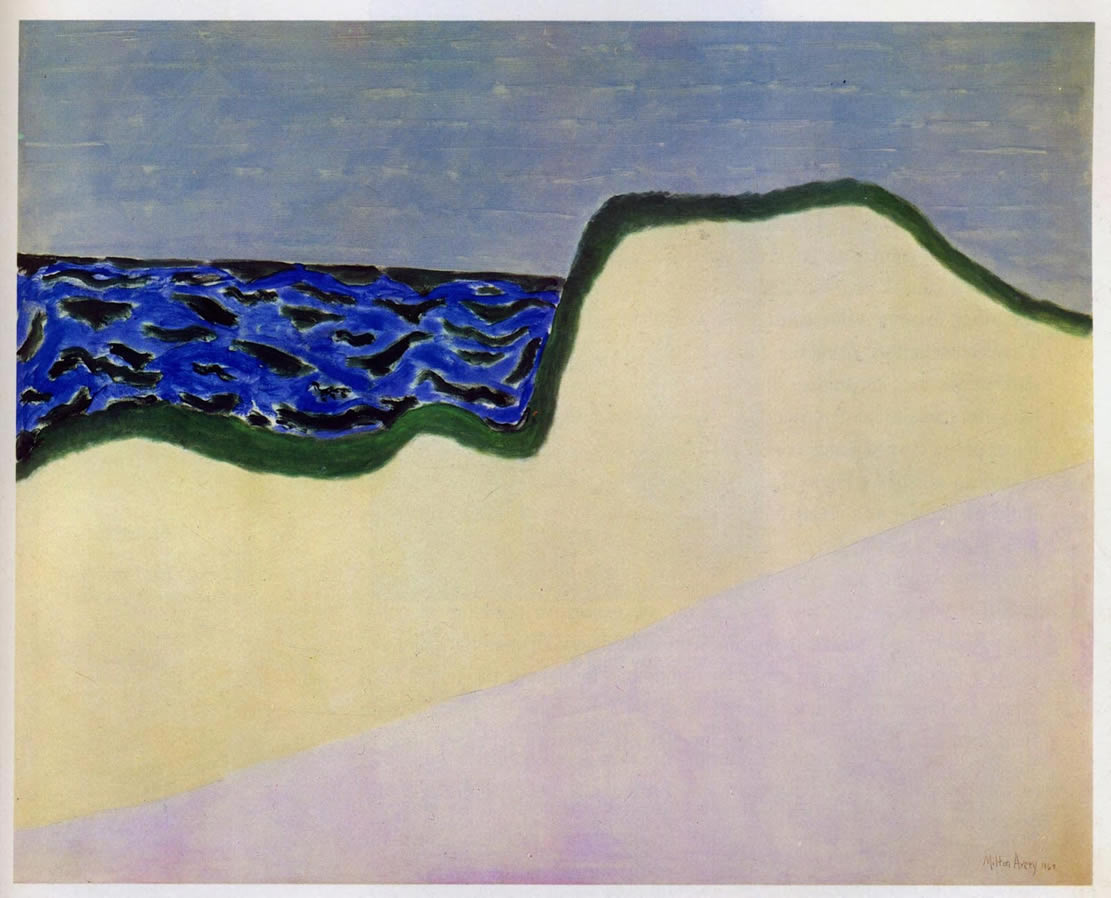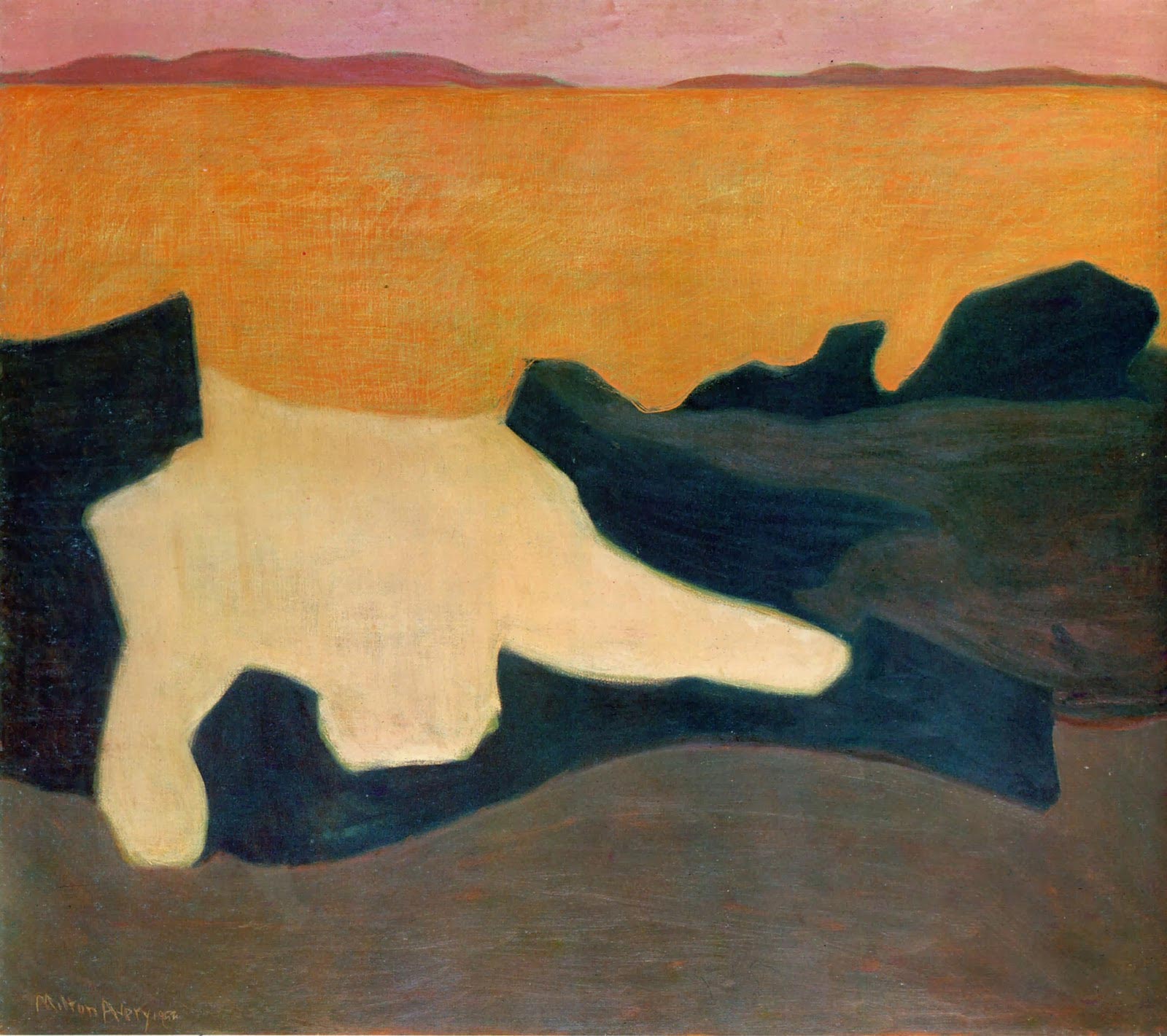
Home Structural Products & Services, Stairlifts
Structural Products & Services, Stairlifts
Furniture, Clocks,
Accessories
Antiques, Folk Art,
Fine Art, Auction Houses
![]()
MILTON AVERY (1885-1965)
“A HARTFORD BIOGRAPHY” Early Years
© Gary W. Knoble, 2014
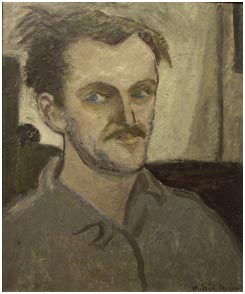 Self Portrait |
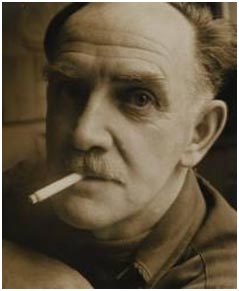 Milton Avery |
Milton Avery is arguably Hartford’s most celebrated painter. He was not born there, but lived in the Greater Hartford area from age 13 to age 40 when he moved to New York City. He was from a working class background and gained much of his artistic schooling at night, working at manual jobs during the day to support himself and his extended family. He evolved from a landscape painter in the early 20th century American tradition into one of the most celebrated American modernists. Avery was born March 7, 1885 in Sand Bank, (later named Altmar), in upstate New York, not far from Lake Ontario. His father, Russell N. Avery was a tanner. His mother, Esther March, was from nearby Williamsport. He was the youngest of four children. His brothers were George and Fabian and his sister wasMinnie. In 1898, the family moved to Wilson Station, which was a rural suburb of East Hartford, Connecticut. The tanning business around Lake Ontario was in decline and Hartford was a rising manufacturing center where jobs were plentiful. His brother George had died by the time of the move. The family lived in a two family house in Wilson Station. His brother Fabian was married and lived in the house with his wife and two young daughters. |
|
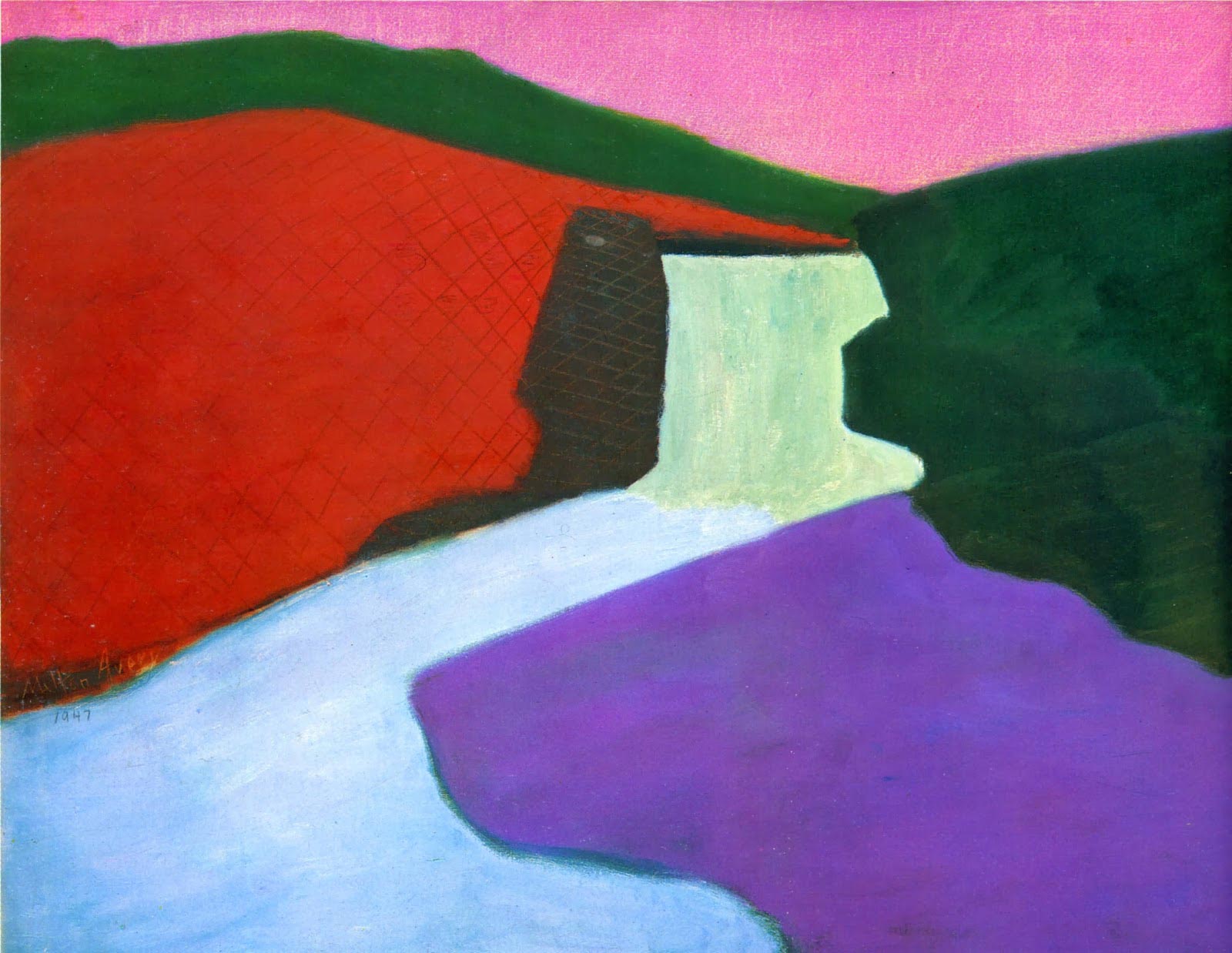 Red Rock Falls, 1947 |
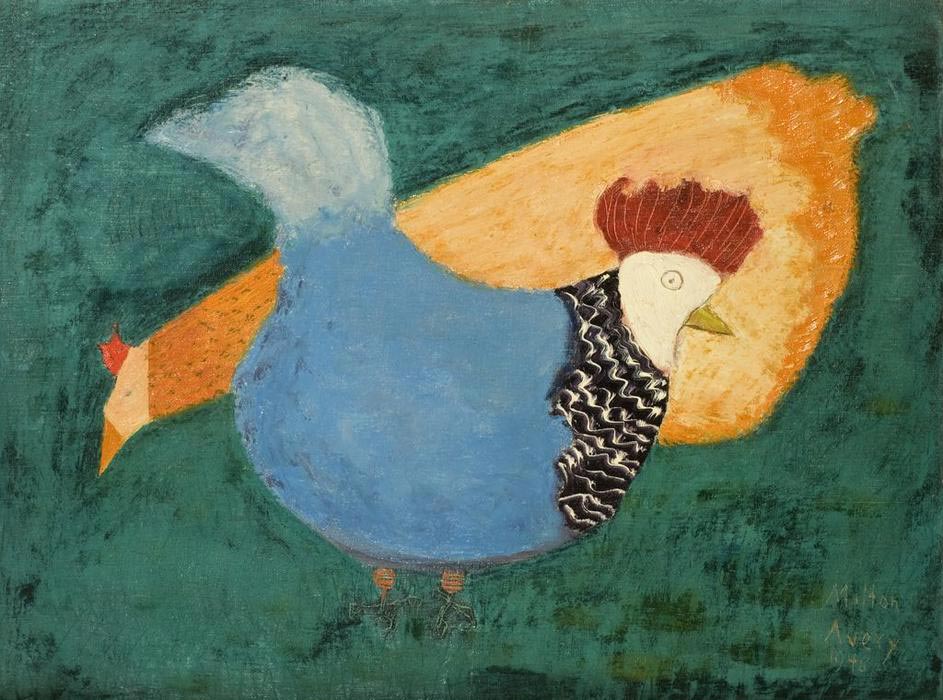 Two Chickens |
In 1901, at age 16, Avery left school and began a series of jobs with manufacturing companies. He first worked for the Hartford Machine and Screw Company. In 1904 he moved to the Underwood Mfg. Company where he worked for six years as an assembler, latheman, and mechanic. (At that time, most of the world’s typewriters were made in Hartford,) In 1905, his father was killed in a wood chopping accident. At about the same time, Avery saw an advertisement for the Connecticut League of Art Students, a night class for men that had been started by Charles Noel Flagg in 1887. At the time Avery joined the League itwas located at 34 Elm Street, but it moved around downtown Hartford frequently, always seeking more affordable accomodations. He had already shown artistic promise and enrolled in the night school, hoping to use his artistic skills in his work. When the lettering class ended, Flagg convinced Avery to join his life drawing class. He studied at the League off and on part time from 1905 until 1918. Barbara Haskill, in her well-researched biography of Avery includes a description of the League: “The League charged no tuition and offered no formal instruction; it was simply one large room in downtown Hartford to which students had free access at night. Instruction consisted of drawing from models or antique casts and receiving individual criticism several times a week from Flagg or from Albertus E. Jones, who became director of the League after Flagg's death in 1916.” (Jones did continue to teach at the League after Flagg’s death, But James Goodwin McManus became the director). (Haskill, page 16)
James Britton, who attended the League a few years earlier, included two vivid descriptions of the League in his unpublished autobiography written in 1935: The loft (at the Connecticut League) (located at the time on the top floor of the Batterson Building at the corner of Asylum and High Streets) was exactly the kind of place artists yearn for – capacious, rough, full of shadows and shifting cross lights, a place where you could paint in perfect freedom, a floor of heavy timbers which would take immediate proper care of paint drops or spilled turpentine. The brick walls were full of juts and recesses that made roomy shelves where things could be tossed and forgotten – and later explored with surprising results. The windows in the south room were high and outside the face of the building projected so that there was a wide trough. We used to climb up and sit on the deep window sill with feet in the trough and paint sunsets that glowed over behind the granite edifice on the green hill of Bushnell’s Park. By 1911, Avery had decided upon painting as a profession listing himself as “artist” in the 1911 Hartford City Directory. His remaining brother, Fabian died in 1913 and in 1915, his sister Minnie’s husband died, leaving Avery as the only male in a household that included three widows, (his mother, his sister, and his sister-in-law), and six nieces. Around this time they all moved to a four family house at 98 Connecticut Boulevard in East Hartford. (The house no longer exists.) Their neighborhood at the time is described in a history of East Hartford as a den of crime. There was clearly a great deal of pressure on Avery to bring home money. While he worked during the day, he continued his studies and his painting at night. His first recorded participation in a public exhibition was in the Connecticut Academy of Fine Art’s “Fifth Annual Exhibition of Oil Painting and Sculpture”, held at the Wadsworth Atheneum, February 15-28, 1915, where he showed a painting entitled “Glimpse of the Farmington” (now lost). In 1916 he again worked at the Underwood Company for a short time as an assembler. In May of 1917, he began working at the Traveler’s Insurance Company as a night file clerk in the Claims Department where he stayed for five years. Shortly after this in 1918, he transferred from the Connecticut League of Art Students to the School of the Art Society of Hartford (which eventually became the Hartford Art School at the University of Hartford). Charles Noel Flagg, the founder of the Connecticut League, died in November of 1916. Flagg was replaced by James Goodwin McManus. Albertus Jones, who had been teaching at the League, transferred to the Art Society of Hartford sometime before 1919. Since Jones is the only teacher officially recognized in Avery’s many biographical sketches, it is possible that Avery began working at night in order to study with Jones at the Art Society where classes were held during the day. A fellow Hartford painter, Aaron Berkman had studied at the League from 1916 to 1918 when he also transferred to the Art Society. Berkman was to be a lifelong friend of Avery’s. It seems likely that the two young friends, who had met at the League, transferred at the same time in order to study with Jones. Avery’s talent was quickly recognized at the Art Society. In 1919 he won a prize for portrait and life drawing. Haskill’s book contains a photograph of his winning drawing which is now lost. James Britton describes a visit with Avery at the Art Society in May of 1919. May 26, 1919 Around 1920, Avery began painting mostly landscapes of the surrounding countryside. Haskell compares the style of these landscapes with those of Ernest Lawson and John Twachtman. From the images provided in the Haskill book, Avery’s brush and palette knife style at the time appears very similar to that of Walter Griffin who was well known in Hartford having taught at both the Art Society and the League some 20 years earlier. During the 20’s and 30’s, Father Andrew Kelly, an avid collector of contemporary art who lived in Hartford, bought many of Milton’s and his wife Sally’s paintings. Father Kelly eventually gave his collection to St. Joseph’s College in West Hartford, Connecticut, where it still remains. In 1920, Avery went to the Gloucester, Massachusetts for the first time. Many of his Hartford contemporaries including Britton, McManus, and Carl Ringius were also frequently in Gloucester. Avery was return to Gloucester regularly until 1934. Still the wage earner of his large extended family, he left The Travelers for a job at United States Tire and Rubber Company and a year later was doing construction work in East Hartford. 1923 saw two group shows in Hartford in which he participated. The first took place at the Atheneum March 10-18, which included Owen Smith, Wallace Putnam, and James Conlon. The second was held in October at the Wiley Gallery. This show included Owen Smith again, as well as Francis H. Storrs and Cornelia Vetter. The review in The Hartford Courant was by Wallace Putnam. Not usually a joiner of art associations, he did however, join the Connecticut Academy of Fine Arts in 1924, having participated in their annual shows since 1915. He continued to participate in almost all of their annual shows until 1931. During his 1924 visit to Gloucester he met Sally Michel, a young painter from Brooklyn, who was to become his wife and life-long muse. 1924 also saw two one man shows in Hartford, the first, in November at the Green Gate Studio and the second in December at the old Gate Studio. Carl Ringius, a classmate from the League, and fellow member of the Gloucester colony wrote reviews of both shows and Wallace Putnam again reviewed the second show in the Hartford Courant. James Britton gave one of his own rare one-man shows in New York in May and Avery signed the guestbook on May 24th. 1925 marked a major milestone in Avery’s life. He decided to move to New York City to be near Sally. His friend Wallace Putnam moved with him and they found an apartment together. While Avery continued to visit and exhibit in Hartford, he never lived there again. This article will conclude with 'Later Years' in our next issue. |
